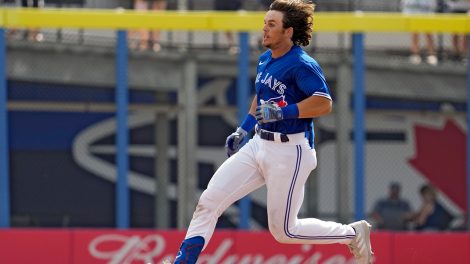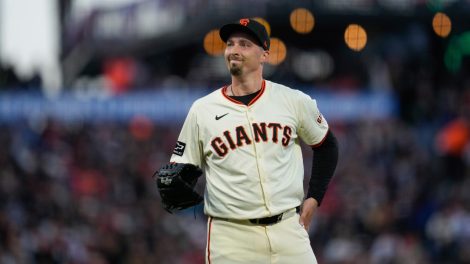When the Tampa Bay Rays began their current run of success in 2008, Gabe Gross, Akinori Iwamura and Andy Sonnanstine were among the team’s biggest contributors. Six years and four playoff berths later, they have turned over virtually the entire roster. Evan Longoria is the lone member of the 2008 starting lineup or starting rotation who’s still a major piece of the current Tampa Bay team.
While parting with players such as Carl Crawford, Matt Garza and James Shields has been difficult, saying goodbye to expensive talent can be a necessary evil for franchises in baseball’s smallest markets. It has allowed Rays executive VP of baseball operations Andrew Friedman to trade for the likes of Chris Archer and Wil Myers — now pieces of the Rays’ core along with Longoria.
“Sustaining success over the long term, in our situation, is a difficult balancing act and a constant focus of ours,” Friedman says. “The ideal way for us to do that is with a core group of players — and Evan is obviously one — who are not only talented and productive on the field, but also show their dedication to excellence by the way they go about their business in the clubhouse and away from the ballpark.”
The franchise lacked talented, productive players in its early years. The Rays (then the Devil Rays) reeled off ten consecutive 90-loss seasons after joining the American League as an expansion team in 1998. But under the leadership of Friedman and Joe Maddon, they’ve won 90-plus games in five of the last six seasons.
“Over the past several years I think we’ve established a strong core and a winning culture here even as we’ve seen some players leave who on a personal level were very important to us,” Friedman continues. “But our goal is always to build and sustain that core.”
Tampa Bay has an enviable roster in place entering the 2014 season. The decision to hold onto left-hander David Price gives the Rays a deep rotation including Archer, Alex Cobb, Matt Moore, Jake Odorizzi and (once he’s healthy) Jeremy Hellickson. This starting depth helped the Rays limit opponents to fewer than four runs per game last year and projects as a strength again.
Led by Longoria and Ben Zobrist, the lineup includes controllable stars in Myers and Desmond Jennings plus solid regulars such as David DeJesus and James Loney. Most importantly, you won’t find a glaring hole in the lineup — or anywhere on the roster for that matter. The Rays are deep enough to withstand the attrition of a six month season (and they’ve needed the depth early following Hellickson’s injury and Alex Colome’s suspension). That kind of talent stacks up favourably with anyone, even though the Rays rely on a payroll in the $75 million range to compete against four division rivals spending more than $100 million this year: the New York Yankees, Boston Red Sox, Toronto Blue Jays and Baltimore Orioles.
While there’s no singular reason for the success of baseball’s best teams, the Rays’ willingness to be flexible helps. They avoid self-imposed rules and unnecessary limitations in hopes of remaining open-minded. It allows the Rays to strike at a moment’s notice.
“The disadvantage we face in terms of resources makes us more sensitive to change, both internally and throughout baseball,” Friedman says. “We have to act decisively but with a smaller margin for error than most clubs, and so we can’t box ourselves in; we need to react more quickly when circumstances change or opportunities present themselves.
“Whether on the field or in the office, a nimble and versatile mindset can help us meet some of our challenges, and get out in front of them sooner.”
Assume the Rays are going to trade Price? Not if the offers aren’t good enough. Rule out the possibility that the Rays would spend big on a closer? Not if Grant Balfour’s available for $6 million per season. Expect the Rays to let every prominent free agent walk? Not if Loney will return for less than $10 million per year.
(In fact, the Rays’ general hesitation to spend big has its advantages. If you don’t often sign players to $100 million deals, you don’t end up with nine-figure deals gone sour. While they signed Evan Longoria for $100 million, retaining Crawford and B.J. Upton for $142 million and $75 million, respectively, would have been crippling.)
The Rays show again and again that they have no problem defying industry expectations if it allows them to become more competitive. And entering the 2014 season, Friedman feels that the Rays have put a contender on the field.
“This group is among the most talented we’ve had here, and is capable of accomplishing some really special things,” Friedman says. “The AL East may be the toughest division in professional sports and we know to expect a battle from day one. Our depth is particularly important to us and we know it will be tested as the year goes on.
“Every season brings its own surprises, but we have high expectations for our guys and believe we have a chance to play meaningful games in September and hopefully beyond.”
Six years ago, when Gross, Iwamura and Sonnanstine took the field alongside the rookie Longoria, that kind of optimism would have been met with skepticism. Now the Rays’ expectations are justified, and it’s up to the rest of the American League to keep pace.










